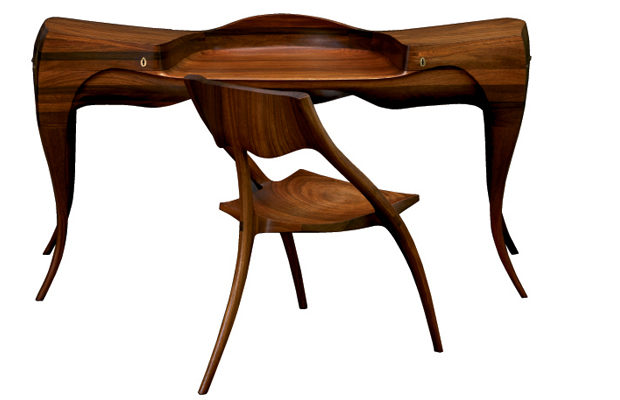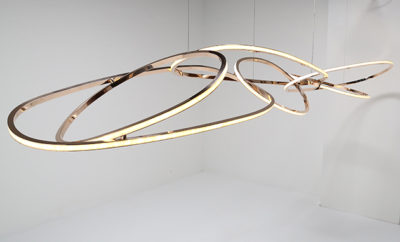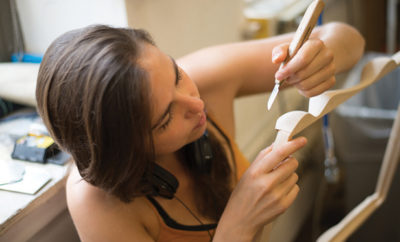
Architecture
Reflections on Wendell Castle

A FAN LETTER FROM VLADIMIR KAGAN
Wendell Castle has stood out as a fixture in the world of art-craft-furniture for nearly fifty years. He owns the genre the way Dale Chihuly is the king of American glass blowing and Frank Gehry has carved his niche in computer generated deconstructionist architecture.
Castle is not a cabinetmaker. He is not a designer who turned to furniture as his calling. He is a sculptor who discovered furniture. This has given him a no-holds-barred freedom to interpret forms and functions from a different perspective. His work is bold and imaginative—he treads where angels fear to. He is a master of the chain saw. When he’s reached the end of one train of thought he wanders onto the next. He’s discovered that interpreting his work in Fiberglass has given him a broader range of expression and the new material has inspired new forms. When he is bored with furniture, he returns to art and when he’s exhausted those mediums, he blithely re-enters the world of furniture with new gusto and imagination. He is also a savvy businessman. Few people in the applied arts do it better than he. He designs commercial furniture geared to the designer market that is produced under license by other manufacturers. He creates limited edition furniture that transcends the functional and enters into the realm of art. For these, he obtains a hefty price when sold through his American and international gallery distribution.
Through all this success, he remains quiet and unpretentious. He is no youngster but has the bearing of an athlete—he is tall and erect and elegant. He is articulate and stands out in a crowd with his carefully quaffed beard, flowing gray hair and charily selected elegant clothes.
Carry on old buddy…keep those creative juices flowing.
—Vladimir Kagan

The desk you see here marked a watershed moment in the life and career of Wendell Castle, the consummate American furniture designer whose eight decades of life (and work) are being widely celebrated this fall. This remarkable, elegant, fanciful, almost impossible-seeming desk was the last piece Castle did on his own, without apprentices or assistants. Called the Vermillion desk, so named because of the wood used, it dates to 1965.
Bought by a Rochester, New York, couple who so loved it that they paid installments of $100 a month, the desk stayed in one house with the original owners for forty-seven years—though it did travel a bit as the centerpiece of a retrospective exhibition between 1989 and 1991. It is now part of an estate and along with its three-legged companion chair, will soon appear on the market, a commission entrusted to James Elkind of Lost City Arts and Richard Rockford of Clarence Hollow Antiques and Fine Art in western New York State.
Lost City’s Elkind says his first sight of the desk truly took his breath away—its subtle asymmetry, its graceful form (like a gazelle or a greyhound), the grain and tones of the wood, even its underbelly, which he admits is a favored view. “There are things that photography just can’t capture,” he says.
This is a unique piece that refered to history at a time when furniture design was largely turning its back on the past, as was Castle himself. Yet the Vermillion desk betrays Castle’s long fascination with art nouveau. The three-legged chair—more sculptural and perhaps more attuned to the studio furniture movement of that moment—makes oblique reference to the desk rather than direct.
Born and reared in Kansas, Castle moved to Rochester in 1961 and has lived there ever since, working and teaching. Considered one of the rising stars of the studio furniture movement, the heir apparent to Wharton Esherick and Sam Maloof (among others), Castle exceeded those expectations. He is a craftsman, a sculptor, and an artist who draws every day, and yet he has also transformed the making of furniture, his furniture, into an area that merges all three—craft, sculpture, and art.
—Beth Dunlop
Image: Top, Antonio Barbagallo photo (portrait). Bottom, Vermillion desk and chair designed by Wendell Castle in 1965. Signed “wc 65.” Sigurjon Gudjonsson photo.












